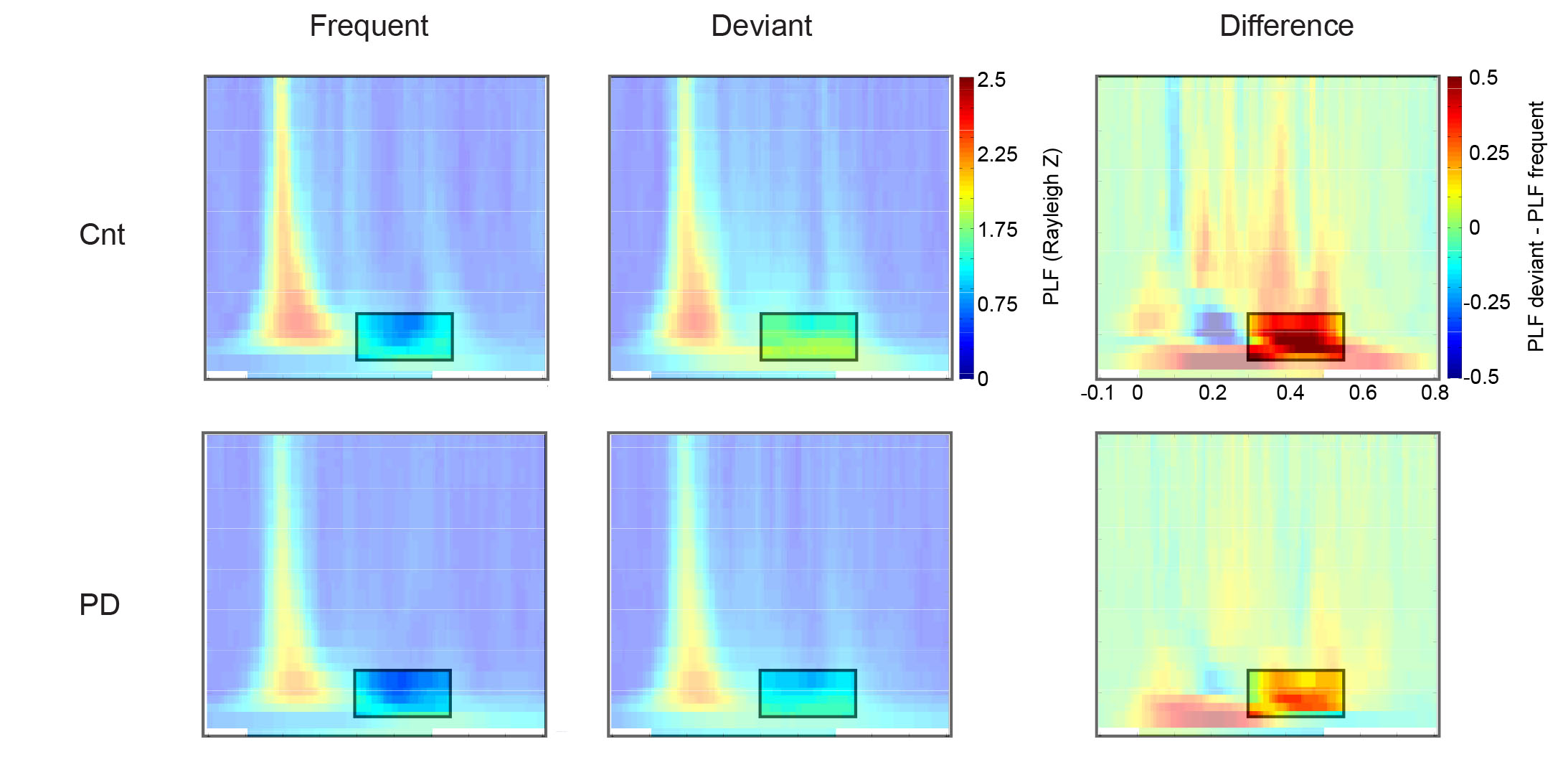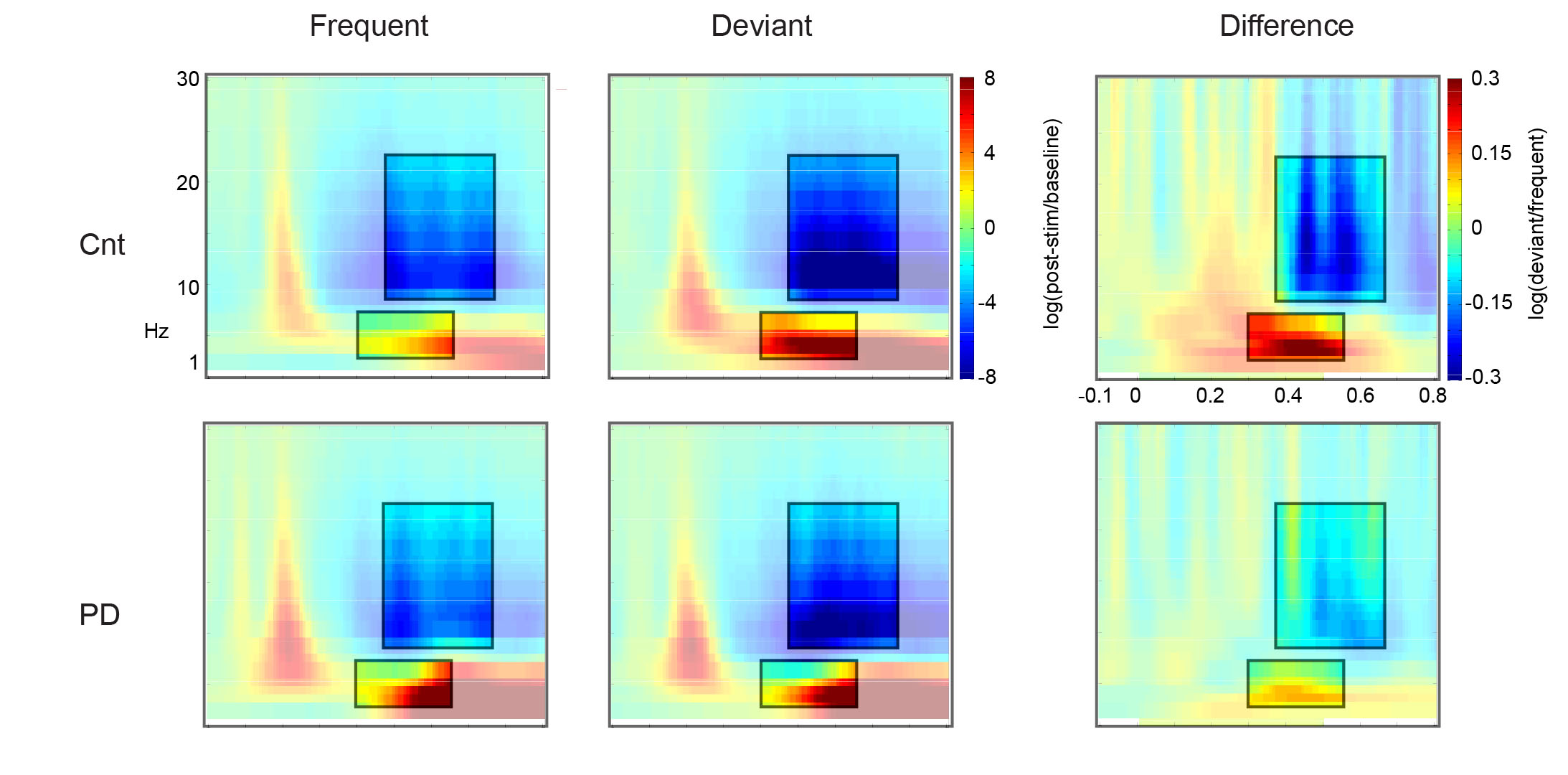Session Information
Date: Wednesday, June 7, 2017
Session Title: Parkinson's Disease: Cognition
Session Time: 1:15pm-2:45pm
Location: Exhibit Hall C
Objective: In this work we aimed to describe the brain oscillations associated with impaired novelty detection at early PD.
Background: Cognitive impairment, especially attentional and executive dysfunction, has been widely described in Parkinson’s disease (PD). Recently, we have shown that the P3a wave, an event-related potential associated with involuntary attention, is reduced from early stages of PD. Furthermore, the P3a might represent a biomarker of severity and disease duration for PD. Nevertheless, the brain oscillations underlying this reduction in the disease remain unclear.
Methods: Twenty one healthy participants similar in age, gender and education were included as control group. All participants performed an auditory involuntary attention task including frequent and deviant tones while a digital EEG was recorded. Time-frequency representations (3-40 Hz) of both total power and phase alignment (phase locking factor-PLF) were calculated for both types of tone. The P3a wave was obtained as well.
Results: We found diminished power and decreased PLF of delta-theta oscillations (3-7 Hz) in the P3a time-range (300-550 ms) after the onset of deviant stimuli in the PD group compared to controls (p<0.05) [figure 1 and 2]. This PLF was associated with P3a amplitude (p=0.001). Also, reduced total power in the alpha-beta range (8-25 Hz, 400-650 ms) was found in the PD group. Across participants, stronger alpha-beta power reduction for deviant vs. frequent tones was associated with improved attentional performance (digit span, p=0.006). Finally, we found diminished P3a amplitudes in the PD group (p=0.04) [figure 3] and years of evolution of PD were inversely associated with P3a amplitudes (p=0.02).
Conclusions: In conclusion, PD patients showed impaired oscillatory responses to novel stimuli both at slow and high frequencies. While phase alignment at delta-theta range accounted for the P3a, alpha-beta oscillations were associated with attentional capacity. Our results confirm that impaired novelty detection is a reliable cognitive feature of neurodegeneration from very early stages of PD.
References: Solís-Vivanco R, Rodríguez-Violante M, Rodríguez-Agudelo Y, Schilmann A, Rodríguez-Ortiz U, Ricardo-Garcell J. The P3a wave: A reliable neurophysiological measure of Parkinson’s disease duration and severity. Clin Neurophysiol 2015; 126:2142-2149.
Solís-Vivanco R, Ricardo-Garcell J, Rodríguez-Camacho M, Prado-Alcalá RA, Rodríguez U, Rodríguez-Violante M, Rodríguez-Agudelo Y. Involuntary attention impairment in early Parkinson’s disease: an event-related potential study. Neurosci Lett. 2011 May 16;495(2):144-149.
To cite this abstract in AMA style:
R. Solis-Vivanco, A. Cervantes-Arriaga, M. Rodriguez-Violante. Oscillatory dynamics of impaired novelty detection at early Parkinson’s disease [abstract]. Mov Disord. 2017; 32 (suppl 2). https://www.mdsabstracts.org/abstract/oscillatory-dynamics-of-impaired-novelty-detection-at-early-parkinsons-disease/. Accessed December 9, 2025.« Back to 2017 International Congress
MDS Abstracts - https://www.mdsabstracts.org/abstract/oscillatory-dynamics-of-impaired-novelty-detection-at-early-parkinsons-disease/



